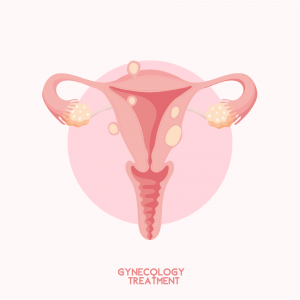What is a chocolate cyst, endometriosis?
To understand what a chocolate cyst is, we need to explain endometriosis. Endometriosis is the presence of endometrium tissue, also called the lining of the uterus, outside the uterus. The lining of the uterus, as the name suggests, is located inside the uterus and is shed every month in the form of bleeding with menstruation. This tissue, which should be inside the uterus, can be found in the peritoneum, ovaries, intestines and under the skin. In some patients it has even been found in the eye. The cause of this abnormal location is unknown. There are genetic, anatomical and immune system hypotheses. None of these have been proven.
The endometrium tissue outside the uterus responds to hormones like the tissue inside the uterus and bleeds every month. With this bleeding in the abdomen or ovaries, the patient experiences a small internal bleeding. It manifests itself with severe pain. Menstruation can be very painful in these patients. In addition to menstrual pain, patients may also experience pain during sexual intercourse, pain during urination, constipation and infertility.
Endometriosis can cause chocolate cysts when located in the ovaries. These cysts are cysts in which heavy bleeding occurs. The blood inside thickens and becomes less viscous over time. This consistency and appearance resembles melted chocolate, hence the name. The presence of a chocolate cyst indicates the presence of severe endometriosis. In these patients, the ovaries are usually attached to the back of the uterus.
Should every chocolate cyst be operated on?
Endometriosis is a cancer that is dependent on the female hormone estrogen. In other words, endometriosis will feed on the female hormone secreted by the patient and will continue to exist until the patient reaches menopause.
Therefore, chocolate cysts may recur. The age of the patient, the size of the cyst, the desire for children and the presence of cancer findings in the cyst are important in treatment planning. There is no definite surgical limit for cyst size. Cysts that grow rapidly and contain structures suggestive of cancer should be operated.
What are the important points in endometriosis?
Patients should keep in mind that they can be operated on again.
Not all endometriosis patients are infertile. The possibility of pregnancy decreases with widespread disease, but it cannot be said that a patient is definitely infertile.
Pain is not parallel to the extent of the disease. Pain may not be seen in very widespread disease. On the contrary, mild disease may cause severe pain.
Hard tissues called nodules that have progressed to deep tissues must be surgically removed.
The desire for a child and the age of the patient are very important in the choice of treatment in endometriosis.
Endometriosis can be treated or controlled with medication.
When the chocolate cyst remains in the ovary, it damages the ovary. Surgical removal of the cyst also causes loss of eggs in the ovary. Therefore, the decision for surgery should be made carefully. Closed surgery should be preferred.
In endometriosis, there are many adhesions in the abdomen. It is important to open these adhesions carefully and to protect the intestines during surgery. Attention should be paid to the urinary tract. For this reason, it may be preferable for experienced physicians to perform advanced endometriosis surgeries.

